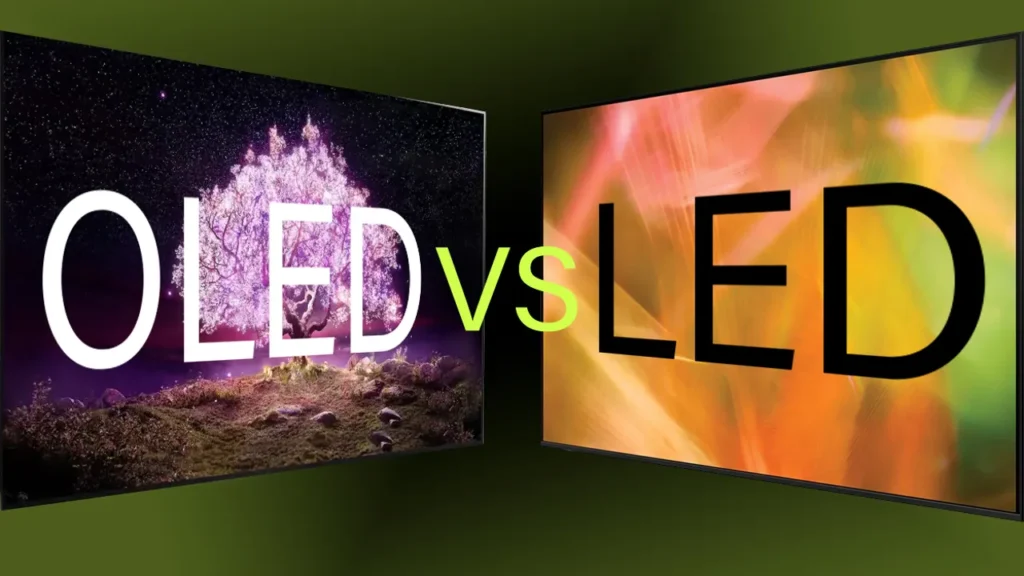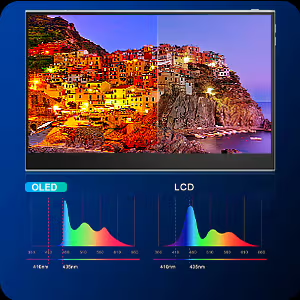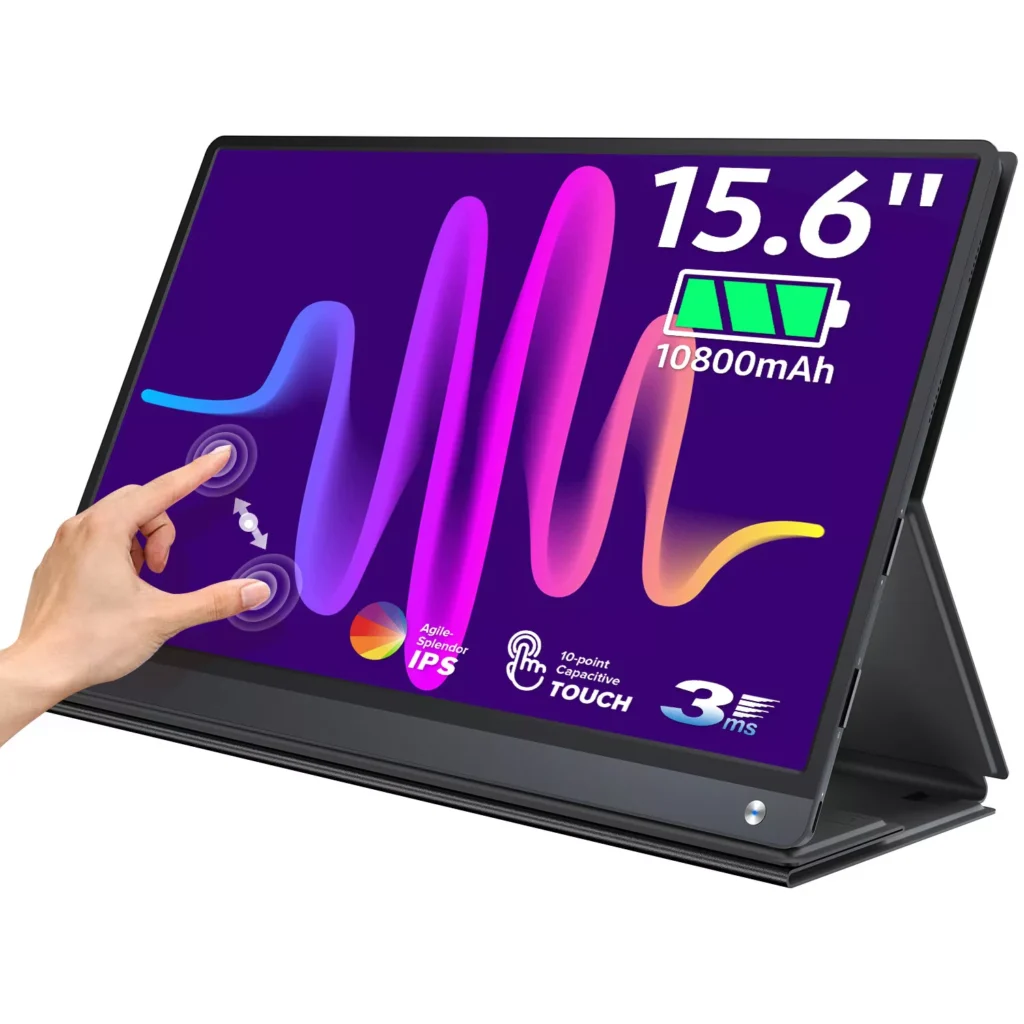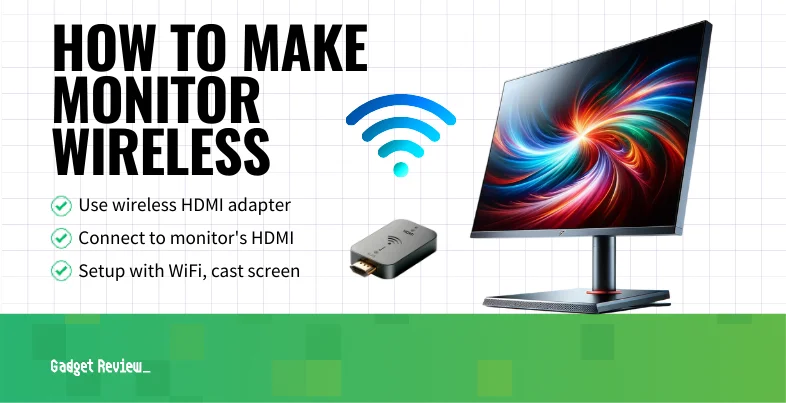Table of contents
When it comes to choosing a portable monitor, you have two main display technologies to consider: OLED (Organic Light Emitting Diode) and LED (Light Emitting Diode). Both have their strengths, but depending on your needs—whether for gaming, work, or entertainment—one may be better suited for you than the other. This article breaks down the differences between portable OLED monitors and LED monitors to help you make the best choice.
What is OLED?
OLED, or Organic Light Emitting Diode, is a display technology where each pixel emits its own light. This means that OLED displays don’t need a backlight, which allows for thinner, more energy-efficient screens with better contrast ratios.
What is LED?
LED, or Light Emitting Diode, is actually a type of LCD display that uses LED backlighting to illuminate the screen. This backlight is crucial because, unlike OLED, LED pixels don’t emit light on their own. While LED displays are typically thicker than OLED, they’ve been around for longer and are more affordable.
OLED vs. LED: Key Differences

1. Display Quality
- OLED: The most significant advantage of OLED displays is their superior image quality. OLED screens offer perfect black levels because individual pixels can be turned off completely, providing infinite contrast ratios. Colors are more vibrant, and the overall picture is sharper.
- LED: LED displays, while still capable of delivering excellent visuals, rely on backlighting, which means blacks are not as deep, and contrast isn’t as high as OLED. However, LED displays have improved over the years, and many offer decent color accuracy and brightness.
Verdict: If you prioritize image quality, OLED is the clear winner. The deep blacks, high contrast, and vibrant colors are especially noticeable in media-rich applications like gaming, video editing, or streaming.
2. Thickness and Portability
- OLED: OLED monitors are often thinner and lighter because they don’t need backlights. This makes them ideal for portable monitors, where space and weight are a concern.
- LED: LED displays require a backlight, which makes them bulkier compared to OLED. However, many modern portable LED monitors are designed to be thin and lightweight, though they usually still have a slight edge over OLED models in terms of sturdiness.
Verdict: OLED wins in terms of portability due to its thinner and lighter design, but some LED monitors can still be relatively compact and lightweight.
3. Power Consumption
- OLED: OLED displays tend to consume less power when displaying darker images because pixels can be turned off entirely. However, when displaying bright or colorful content, OLED screens can use more power than LED displays.
- LED: LED monitors, thanks to their backlights, consume a more consistent amount of power, though generally more than OLED in darker scenes. LED’s power efficiency shines in well-lit environments where screen brightness needs to be cranked up.
Verdict: OLED is more power-efficient when displaying dark content, while LED may be more efficient when showing bright content consistently. For portable use, where battery life matters, OLED could have the upper hand if you’re not always displaying bright images.
4. Durability and Lifespan
- OLED: One of the downsides of OLED technology is the risk of burn-in, where static images can become permanently “burned” into the display. This can be a concern for users who frequently use their screens for static content like documents or spreadsheets.
- LED: LED screens are less susceptible to burn-in, and in general, tend to have a longer lifespan because they don’t degrade in the same way OLED panels can over time.
Verdict: LED is the more durable and longer-lasting choice, especially if you plan to use your monitor for work or other tasks that involve static images.
5. Cost
- OLED: OLED monitors are generally more expensive because the technology is still newer and harder to produce. While prices have come down, you’ll likely pay a premium for an OLED portable monitor.
- LED: LED technology is more mature and widespread, making LED portable monitors much more affordable. They also come in a wider variety of price ranges, meaning you’re likely to find an LED monitor that fits your budget.
Verdict: LED is the more budget-friendly option, making it a better choice for cost-conscious consumers.
Which One is Right for You?
The decision between OLED and LED ultimately comes down to your personal preferences and how you intend to use the monitor. Here are some common use cases to help guide your decision:
For Gaming
If you’re looking for a portable monitor for gaming, the OLED display is likely the best choice. The deep blacks, vibrant colors, and higher contrast ratios can make games look incredible, especially if you’re playing visually intense titles. The responsiveness of OLED screens can also enhance your gaming experience.
However, if you’re a casual gamer and budget is a concern, an LED monitor with a high refresh rate might suffice, offering a decent gaming experience without breaking the bank.
For Creative Work
For designers, photographers, or video editors, color accuracy and image quality are key. OLED monitors provide exceptional contrast and color vibrancy, making them ideal for creative professionals. The ability to view deep blacks and a wider color range makes OLED the go-to choice for tasks that require precision.
For General Use and Productivity
If you need a portable monitor for general tasks like working on spreadsheets, browsing, or office work, an LED monitor might be a more practical option. LED displays offer good overall performance at a more affordable price point, and they tend to be more durable for long-term use.
For Portability
If portability is your top priority, OLED monitors are usually thinner and lighter, making them easier to carry around. However, if you need something more rugged for frequent travel, a sturdy LED monitor could be a better choice.


Conclusion
Both OLED and LED portable monitors have their unique strengths and weaknesses. OLED excels in image quality, contrast, and portability, making it perfect for gamers and creatives who demand the best visual performance. On the other hand, LED offers solid all-around performance at a more affordable price, making it a great option for everyday use or for those on a budget.
Ultimately, your choice should depend on how you plan to use the monitor and which features are most important to you.





